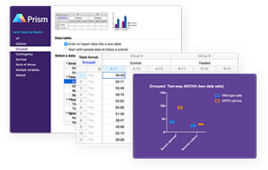Lance Armstrong was the best of the Doper Generation
Society seems willing to overlook the nuttiness of some people more than others. Take Jesse Ventura whose resume included Navy SEAL, pro wrestler (such as it is), actor alongside the muscle-caked Arnold Schwarzenegger, an inexplicable stint as the governor of Minnesota, only to wind up trolling the professional lecture circuit for those willing to pay to see a balding, pigtailed, conspiracy-theorizing nut cake.
As crazy as that Forrest-Gumpian chronology seems, it pales next to the life story of the aforementioned Governor Schwarzenegger who also managed a gubernatorial chair in California after a wildly-successful stint as a thick-accented action star who couldn’t tread through too many pages of a screenplay before exposing pectorals that a Bison would envy.
But before the films, before taking over the anarchistic enclave of California, Arnold was unquestionably the world’s top bodybuilder. In that sport, winning one Mr. Olympia is a career. Win two, and you’re in rarefied air. Arnold won six before he retired. Go ahead; go on the Internet and look up a few photos of The Man at his peak. 22” biceps invaded by garden-hose veins; his 34” waist exploded upwards into an inverted pyramid 57” chest. His calves were the size of NFL footballs.
And steroids helped.
Before you rush to judgment, know that steroids in those days were as much a part of competitive bodybuilding as protein shakes and cable pulls. Twenty-six-week cycles of Primobolan injectable, Dianabol oral, and Deca Durabolin injectable1 helped to inflate Arnold like a life raft.
But before the Barry Bonds/Marion Jones/Mark McGuire/Alex Rodriguez, and — well, why slow my DSL bandwidth listing them all — there was professional cycling: the most juiced collection of rollin’ ‘roids on Earth. Look no farther than the Tour de France to understand the pervasiveness, no, the requirement to dope, at least until the last few years.
The 2012 race dragged cyclists up, down and around mountains through nearly 2,500 miles in three weeks. There is a loop I take here in Colorado if I want to skip lunch and ride 22 miles. It takes me a little more than 70 minutes and includes some lung-busting climbs. It also includes a descent where I feel the wind whistling through my helmet at 35 mph — that’s the speed these monsters hit on flat ground during the time trials, and they can hold it for nearly eight miles. When they go downhill, they might exceed 60 mph, and “There Will Be Blood.” Pro cyclists are routinely injured — some die. In fact, Tyler Hamilton, who we’ll get to in a moment, won a stage in the 2003 race after breaking his collarbone in a fall. He said he could hear the bones grinding every inch of the way.
But ‘roids are really the candy of the mountain stages. Try getting on a bike and holding 17 mph on flat ground. That ain’t a cruise, folks, and that’s what these cheetahs do going up the mountains. So you can understand why so many pro cyclists train in the mountains. Any trip up to Boulder will surely involve seeing a pack of riders blasting up and down the mountains eclipsing the downtown area.
So why cheat?
First, let’s go back to the days of Kipchoge “Kip” Keino, the legendary Kenyan distance runner of late 60s and early 70s. He is one of the athletes who discovered the use of high-altitude training to boost red cell counts — the more red cells, the more oxygen can be carried to the muscles.
But such training is a long, punishing grind; and it takes time. Somewhere along the line, the pro cyclists, or their physicians, figured out that taking transfusions of red cells was a shortcut to boosting red cell count. This actually worked well until the lab folks figured out the blood tests necessary to determine if the blood drawn came from the person, or some schmuck who’d sold a pint for 25 bucks.
And this little point is where Tyler Hamilton set the world record for astonishingly insulting the intelligence of the cycling world with the most amazing web of denial ever crafted. Hamilton claimed that, yes, there was obviously blood from someone else in his veins, but that “someone else” was a chimeric twin — a remarkably common occurrence whereby a pregnancy starting as twins ends up as one baby, with the cells of both twins in one body. Scientists have created lab chimeras, there are actually sheep out there that are part animal, part human — anyone want to rent the movie, The Island of Dr. Moreau?
Once thought to be incredibly rare, advanced genetics research now suggests that sensitive tests demonstrate that as much as 70 percent of the population has some strange DNA floating about. One theory regarding immune systems attacking bone marrow transplants after a “perfect match” was found suggests the rejection may be those troublemaker vagrant cells ganging up on the transplanted marrow.
But not so fast, Tyler. While strange cells can be found in many people, that doesn’t explain the massive amount of cells found at odds with each other coursing through Tyler’s bloodstream. In fact, Dr. Ross Brown of Royal Prince Alfred Hospital said that in 20,000 blood samples tested with flow cytometry, he’d never found a single chimeric occurrence.2
Tyler followed the pattern of a great many pro cyclists: deny like hell until the proof renders the accusation undeniable. See Jan Ullrich, Floyd Landis, and of course, the recently buffeted Lance Armstrong.
Armstrong’s alleged blood boosting shortcut was Erythropoietin, aka: EPO. A protein hormone naturally produced in the liver and kidneys, it also can be cultured in the lab. In fact, Amgen, the host of the biggest cycling race in North America, the Tour of California, was one of the first companies to produce the substance — though it was hardly Amgen’s intention to help cyclists cheat.
Lance has stated that he has passed hundreds of tests in his career, and that’s true. So why, then, did he recently give up the ghost and accept the sanctions of the United States Antidoping Agency that stripped him of all seven of his consecutive Tour de France titles? Well, basically Lance was getting to the point of having to either face his accusers, and reports indicate there were legions of them, or simply sit back, say “I’m tired of fighting” and take his sanctions without rebuttal.
Lance of course did the latter, and you can either infer he is the most principled athlete in the history of the planet; giving up $30 million bucks a year in endorsements, his seven Tour de France titles, and a plethora of stage wins, an Olympic medal, and who-knows-what else. Or, the cynics in the crowd might say that Lance walked up to the precipice of the cliff similar to those bordering the roads on the Col du Tourmalet where he tortured so many of his competitors during those seven TDF wins. Lance still can say he never tested positive — well, sort of, if you get into sample handling malfeasance and what have you (where’s a good LIMS when you need one?). Based on that lack of evidence, and having chosen not to face his former teammates under oath, Lance may never admit guilt, but he is deemed guilty by omission.
Okay; there are all sorts of reports that he bullied those who opposed him, or even criticized some of his connections with Spanish doctor Michael Ferrari (since banned). Ask Italian rider Filippo Simeoni about the latter. Or how about former teammate Frankie Andreu, an admitted doper who was part of television’s annual coverage of the Tour de France? Andreu’s wife went raw on Armstrong, and not long after, Andreu vanished from the television team and was fired from the Team Director role of the Toyota-United Pro Cycling Team in 2006.3
So, Lance was not a saint. I’ve never met the man, but he is the reason I started watching the TDF on TV, and I still do.
But let’s think about this for a moment. Did EPO make Lance Armstrong? Are drugs the only reason he won those races?
Preposterous.
There is a reason that Lance’s seven forfeited titles will not be awarded to the runner-up, the second runner-up, or anyone else. That is because there is no guarantee that those next in line were clean. In fact, evidence suggests that most riders were riding syringes as often as their bikes. The statistics are too frightening to post, but the percentage of Top-10 finishers in the TDF during Lance’s wins who were at some time banned for drugs tells us that Better Athletics Through Pharmacology was the true motto of Pro Cycling in those days.
Sad to say, Lance was likely a doper, but he was also a phenomenally gifted athlete who was riding Mano-a-mano, not with hapless, disadvantaged schmucks, but with finely-honed drug-fueled competitors who had more holes in their arms than Spongebob Squarepants.
Since the anti-doping measures have become a hell of a lot stronger, and the technology has overtaken the riders, a fascinating statistic recently published has shown that the wattage generated by pro cyclists has dropped significantly. Gee, ya think?
Is doping right? No. Is it good that lab testing technology and rigorous pursuit of cheaters may even the playing field to pure athletic skill and training rather than who had the best doctors? Of course. Will the sport be better to watch? I hope so — but I had a damned good time watching Lance race all those years no matter what the hell fire was lit beneath his bum.
References
1. SteroidGuideReview.com
2. Gina Kolata, New York Times May 10, 2005
3. Cycling News, July 27, 2006
Randy Hice is Director, Strategic Consulting at STARLIMS. He may be reached at [email protected].




